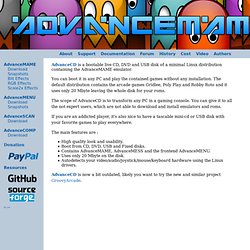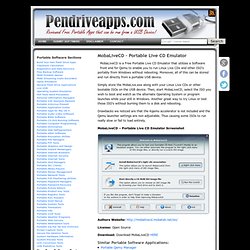

Electronics. DisplayLink adapter brings 4K video streaming to USB 3.0 or 2.0. DisplayLink, a company well established in the market of USB peripherals, has shown off a device at IDF that is capable of sending 4K 'Ultra HD' (3840 x 2160) video through both USB 2.0 and USB 3.0.

The feat is achieved through dynamic data compression on a chip developed by DisplayLink; a chip which is also capable of driving multiple 4K displays and providing other connectivity features. Engadget saw the device in action, and claimed that 4K video sent through USB 3.0 is perfectly smooth. USB 2.0, with considerably lower bandwidth, is less perfect, with the device dropping frames occasionally, although Engadget still calls it "quite watchable".
Sending 4K video through USB 3.0 is no easy feat. Transmitting content with such a high resolution requires at least HDMI 1.4, which provides a maximum bandwidth of 10.2 Gbps: more than twice that of USB 3.0's throughput (5 Gbps). With the new devices, DisplayLink is aiming to provide 4K video output to systems that don't have native 4K output. Xi3: Help us Usher in the Post-PC Era by David Politis. Risks and challenges Shipments of the very first Xi3 Modular Computer (the X5A-5342 model) began in the second half of 2011 and continue today.

In this regard, we have already proven that we have: * Re-imagined a traditional computer motherboard as three separate yet interconnected smaller boards, * Created one of the most environmentally friendly 64-bit, x86-based computers on the planet, (a machine that runs popular applications and operating systems with ease), * A computer being used today by national and local government agencies and branches, educational institutions, large corporations, small enterprises, and consumers alike, and * Have done so with a chassis with less than 40-cubic inches of internal space.
And Xi3 Corporation is growing today. However, just because we created and began selling our very first Xi3 Modular Computer, there are no guarantees that we will be able to do it again. So . . . Cross Platform File Transfer. Ubi. Personal VPN Service. Latest entries. SimpleTV - Home. Kickstarter.
Discover Projects » Design. Discover Projects » Technology. Advance Projects - AdvanceCD. AdvanceCD is a bootable live CD, DVD and USB disk of a minimal Linux distribution containing the AdvanceMAME emulator.

You can boot it in any PC and play the contained games without any installation. The default distribution contains the arcade games Gridlee, Poly Play and Robby Roto and it uses only 20 Mbyte leaving the whole disk for your roms. The scope of AdvanceCD is to transform any PC in a gaming console. You can give it to all the not expert users, which are not able to download and install emulators and roms. If you are an addicted player, it's also nice to have a tascable mini-cd or USB disk with your favorite games to play everywhere. The main features are : High quality look and usability. AdvanceCD is now a bit outdated, likely you want to try the new and similar project GroovyArcade. The Brydge. Meraki. Free Portable Software USB Flash Drive Applications.
MobaLiveCD – Portable Live CD Emulator. MobaLiveCD is a Free Portable Live CD Emulator that utilizes a Software front end for Qemu to enable you to run Linux Live CDs and other ISO's portably from Windows without rebooting.

Moreover, all of this can be stored and run directly from a portable USB device. Simply store the MobaLive.exe along with your Linux Live CDs or other bootable ISOs on the USB device. Then, start MobaLiveCD, select the ISO you wish to boot and watch as the alternate Operating System or program launches while your still in Windows.
Another great way to try Linux or test those ISO's without burning them to a disk and rebooting. Drawbacks we noticed are that the Kqemu accelerator is not included and the Qemu launcher settings are non adjustable. Boot any and all ISO images from USB drive. Boot any and all ISO images from USB drive # I spent days looking for a way to boot any and all ISO images from a USB drive.

I envisioned being able to simply copy any bootable CD or DVD (Windows installers, OS X boot discs, Linux Live CDs and recovery discs like Knoppix, etc) to a USB drive and boot it normally. Some of the possible solutions I found included: The more robust solutions were generally quite tedious, and none of them worked for all ISO images, as explained here: Boot "any" ISO image or boot "all" ISO images. Testbuild. :: Build :: CD EMU - Production unit (test) - Assembly / Build (Early days... and beyond..) After about a year of first making the teensy++ concept emulator and finding out that cd emulation is pretty easy and then moning onto the evk1104 board. I had to make my own version - cheeper then the evk1104 and more taylored to this project. After poring over design notes for things like boost/buck power conerters for the 3.3v requirements and parts availiability I finally had all the parts I needed to build one.
-> early november, 2010 <- Prebuild - Random peices/parts - Figured I'd take a couple of pictures of some of the parts before I start assembling this, left most parts in the bags - don't want to mix them up. USB CD Emulation. Idea? Usb Rubber Ducky As Iso Stick. A Wearable Computer Turns Any Surface Into A Touchscreen. Chris Harrison, a PhD student in Human-Computer Interaction at Carnegie Mellon University, is full of interesting interface ideas.

One of his latest projects is called OmniTouch, whose prototype design uses a shoulder-worn, depth-sensing camera/projector to create interactive "touchscreens" on anything from a nearby wall to your own forearm. The technology is amazing: OmniTouch’s screenless interface can distinguish between a touch and a "click" (i.e., a command to do something), auto-detect the size of the interface surface (e.g., it will project a short strip onto your arm, but a large rectangle onto the wall), and even recognize the orientation of the image in 3-D space (if you tilt your screen-hand toward yourself, it will consider it "private"; a more flat orientation will be deemed "public").
But oh, that rig--are normal people really going to be walking around someday with shoulder mounted screen-guns like the Predator?